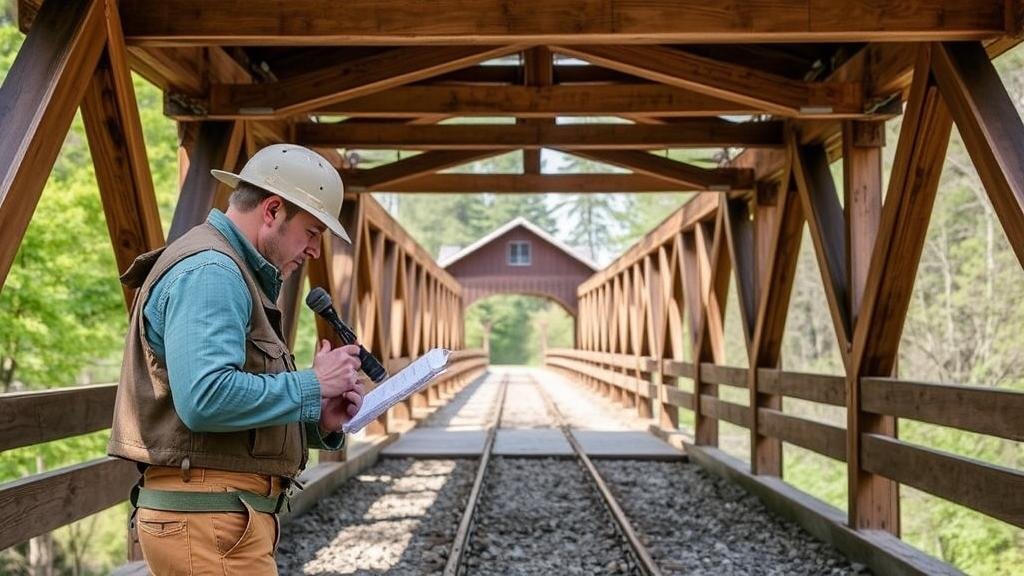Detecting for Relics Near Historic Timber Bridges or Overpasses
Detecting for Relics Near Historic Timber Bridges or Overpasses
The intersection of transportation infrastructure and historical preservation presents unique challenges and opportunities for archaeologists, engineers, and historians alike. Detecting relics near historic timber bridges and overpasses requires a multidisciplinary approach that melds advanced technology with methodical investigation. This article explores the methodologies used in relic detection, the importance of such endeavors, and provides case studies that exemplify successful outcomes.
Understanding the Historical Context
Timber bridges are significant not only for their engineering elegance but also for their cultural relevance. Built primarily during the 19th and early 20th centuries, these structures often represent local craftsmanship and the technological advancements of their time. Overpasses, constructed to facilitate transportation while minimizing disruptions to existing landscapes, can also yield artifacts from various periods. Understanding the historical context of these structures is paramount in guiding detection efforts.
Methodologies for Detecting Relics
Several methodologies exist for detecting relics around historic timber structures. e methods can be categorized into three main types: archaeological survey, geophysical methods, and remote sensing technologies.
- Archaeological Survey: A systematic field survey can be conducted to identify surface artifacts or subsurface features. Techniques such as shovel tests and systematic excavations are common. For example, while excavating near the historic Campbell Bridge in Virginia, archaeologists discovered remnants of old tool kits indicating craftsmanship from the 1800s.
- Geophysical Methods: Geophysical techniques such as ground-penetrating radar (GPR) and magnetic surveys can be invaluable. GPR can reveal buried structures, while magnetic surveys identify anomalies in soil composition. At the Lawrence Historic Timber Bridge site in Massachusetts, GPR was used to locate buried foundations before roadwork commenced, revealing previously undocumented features.
- Remote Sensing Technologies: Aerial photography and LiDAR (Light Detection and Ranging) technology can highlight landscape changes over time. LiDAR has been particularly effective in detecting alterations around historic overpasses, allowing for the identification of areas that may harbor relics.
Case Studies
Several case studies exemplify how the aforementioned methodologies have successfully uncovered relics near historic timber bridges and overpasses.
- The Peter J. Stott Bridge, Oregon: This project integrated ground-penetrating radar and electromagnetic induction to chart subsurface features. The findings included remnants of wooden piles used in the bridge’s construction, enabling a deeper understanding of early 20th-century engineering practices.
- The Hawkesbury River Timber Bridge, Australia: A combination of archaeobotanical analysis and geophysical surveying led to the discovery of early industrial artifacts nearby. This informed preservation efforts and provided insights into the socio-economic backdrop of timber bridge construction in the area.
Importance of Relic Detection
Detecting relics surrounding historic timber bridges and overpasses serves multiple purposes:
- Cultural Heritage Preservation: Protecting and documenting artifacts ensures that future generations can appreciate their historical significance.
- Informing Restoration Efforts: Knowledge gained from relics can guide authentic restoration practices, maintaining the integrity of historic structures.
- Contributing to Academic Research: Each discovery aids historians and archaeologists in understanding past civilizations, technological progress, and cultural shifts.
Challenges in Detection
While the methodologies of relic detection are robust, challenges remain. e include:
- Environmental Factors: Changes in vegetation, soil properties, and weather conditions can affect the efficacy of geophysical methods. Destructive roots, for example, may obscure underlying artifacts.
- Funding Constraints: Archaeological investigations often require significant financial investment, which can hinder comprehensive studies.
- Stakeholder Collaboration: Balancing the interests of engineers, archaeologists, and local communities can be complex but is essential for successful relic detection.
Conclusion
Detecting relics near historic timber bridges and overpasses is an intricate process that requires a blend of technology, historical insight, and collaborative efforts. The methodologies employed offer various routes for successfully uncovering artifacts that enrich our understanding of local history and engineering practices. Case studies reveal the potential for meaningful discoveries that can inform both preservation and restoration projects.
As infrastructure ages and the pressures of modernization increase, adopting proactive relic detection strategies becomes increasingly crucial. By prioritizing collaboration and investment in advanced detection technologies, stakeholders can help preserve the heritage that these historic structures represent.


